The critical role of self-leadership’s in work engagement and organizational citizenship behaviors
Abstract
This study discuss the relationships between self-leadership, organizational commitment, emotional exhaustion, work engagement, Organizational Citizenship Behaviors, and perceived organizational commitment. Using a sample of 280 employees, it was found that self-leadership had a positive relationship with organizational citizenship behaviors. Further, through emotional exhaustion self-leadership had a significant relationship with work engagement. The findings further suggest that perceived organizational support moderated the relationships between self-leadership and both organizational citizenship behaviors and emotional exhaustion. This study filled a void in the literature by critically examining how emotional exhaustion may act as a mechanism in between self-leadership and work engagement/organizational citizenship behaviors.
Downloads
References
Baer, M. D., Dhensa-Kahlon, R. K., Colquitt, J. A., Rodell, J. B., Outlaw, R., & Long, D. M. (2015). Uneasy lies the head that bears the trust: The effects of feeling trusted on emotional exhaustion. Academy of Management Journal, 58(6), 1637-1657.
Bandura, A. (1986). Social foundations of thought and action. Englewood Cliffs, NJ, 1986, 23-28.
Bandura, A. (2001). Social cognitive theory of mass communication. Media psychology, 3(3), 265-299.
But’ko, L., Makogon, B., Nifanov, A., Poluhin, O., & Tychinin, S. (2019). La formalización del territorio en las constituciones de los países CEI. Revista Científica Del Amazonas, 2(3), 47-55. Recuperado a partir de https://revistadelamazonas.info/index.php/amazonas/article/view/17
Cobb-Clark, D. A., & Schurer, S. (2012). The stability of big-five personality traits. Economics Letters, 115(1), 11-15.
D'Intino, R. S., Goldsby, M. G., Houghton, J. D., & Neck, C. P. (2007). Self-leadership: A process for entrepreneurial success. Journal of leadership & organizational studies, 13(4), 105-120.
Daft, R. L., & Lewin, A. Y. (1993). Where are the theories for the" new" organizational forms? An editorial essay. Organization Science, i-vi.
Dee, J. R., Henkin, A. B., & Chen, J. H.-H. (2000). Faculty autonomy: perspectives from Taiwan. Higher Education, 40(2), 203-216.
DiLiello, T. C., & Houghton, J. D. (2006). Maximizing organizational leadership capacity for the future: Toward a model of self‐leadership, innovation and creativity. Journal of Managerial Psychology, 21(4), pp. 319-337.
Dinh, J. E., Lord, R. G., Gardner, W. L., Meuser, J. D., Liden, R. C., & Hu, J. (2014). Leadership theory and research in the new millennium: Current theoretical trends and changing perspectives. The Leadership Quarterly, 25(1), 36-62.
Edelson, M. G., Polania, R., Ruff, C. C., Fehr, E., & Hare, T. A. (2018). Computational and neurobiological foundations of leadership decisions. Science, 361(6401).
Eisenberger, R., Armeli, S., Rexwinkel, B., Lynch, P. D., & Rhoades, L. (2001). Reciprocation of perceived organizational support. Journal of Applied Psychology, 86(1), 42.
Frayne, C. A., & Geringer, J. M. (2000). Self-management training for improving job performance: A field experiment involving salespeople. Journal of Applied Psychology, 85(3), 361.
Fuller, C. M., Simmering, M. J., Atinc, G., Atinc, Y., & Babin, B. J. (2016). Common methods variance detection in business research. Journal of business research, 69(8), 3192-3198.
Furtner, M. R., Rauthmann, J. F., & Sachse, P. (2015). Unique self-leadership: A bifactor model approach. Leadership, 11(1), 105-125.
Gagné, M., & Deci, E. L. (2005). Self‐determination theory and work motivation. Journal of organizational behavior, 26(4), 331-362.
Godwin, J. L., Neck, C. P., & Houghton, J. D. (1999). The impact of thought self‐leadership on individual goal performance. Journal of Management development, 18(2), pp. 153-170
Henseler, J. (2017). Bridging design and behavioral research with variance-based structural equation modeling. Journal of Advertising, 46(1), 178-192.
Henseler, J., & Chin, W. W. (2010). A comparison of approaches for the analysis of interaction effects between latent variables using partial least squares path modeling. Structural equation modeling, 17(1), 82-109.
Houghton, J. D., Bonham, T., Neck, C. P., & Singh, K. (2004). The relationship between self‐leadership and personality. Journal of Managerial Psychology, 19(4), pp. 427-441
Houghton, J. D., & Neck, C. P. (2002). The revised self‐leadership questionnaire: Testing a hierarchical factor structure for self‐leadership. Journal of Managerial Psychology, 17(8), pp. 672-691.
Ilgen, D. R., & Pulakos, E. D. (1999). The Changing Nature of Performance: Implications for Staffing, Motivation, and Development. Frontiers of Industrial and Organizational Psychology: ERIC.
Ingvarson, L. (2009). Developing and rewarding excellent teachers: the Scottish Chartered Teacher Scheme. Professional Development in Education, 35(3), 451-468.
Jensen-Campbell, L. A., Rosselli, M., Workman, K. A., Santisi, M., Rios, J. D., & Bojan, D. (2002). Agreeableness, conscientiousness, and effortful control processes. Journal of research in personality, 36(5), 476-489.
Locke, E. A., & Latham, G. P. (2004). What should we do about motivation theory? Six recommendations for the twenty-first century. Academy of Management review, 29(3), 388-403.
Luszczynska, A., & Schwarzer, R. (2005). Social cognitive theory. Predicting health behaviour, 2, 127-169.
Maksum, A., Safitri, D., Ibrahim, N., Marini, A., & Wahyudi, A. (2020). Impact of Self-Leadership on Student Critical Thinking. International Journal of Innovation, creativity and change, 284-304.
Manz, C. C. (1986). Self-leadership: Toward an expanded theory of self-influence processes in organizations. Academy of Management review, 11(3), 585-600.
Manz, C. C., & Sims Jr, H. P. (1980). Self-management as a substitute for leadership: A social learning theory perspective. Academy of Management review, 5(3), 361-367.
Marques-Quinteiro, P., Vargas, R., Eifler, N., & Curral, L. (2019). Employee adaptive performance and job satisfaction during organizational crisis: the role of self-leadership. European Journal of Work and Organizational Psychology, 28(1), 85-100.
Meyer, S. E., Allen, P. S., & Beckstead, J. (1997). Seed germination regulation in Bromus tectorum (Poaceae) and its ecological significance. Oikos, 475-485.
Moorman, R. H., & Blakely, G. L. (1995). Individualism‐collectivism as an individual difference predictor of organizational citizenship behavior. Journal of Organizational Behavior, 16(2), 127-142.
Mount, M. K., Barrick, M. R., Scullen, S. M., & Rounds, J. (2005). Higher‐order dimensions of the big five personality traits and the big six vocational interest types. Personnel Psychology, 58(2), 447-478.
Nakagawa, S. (2004). A farewell to Bonferroni: the problems of low statistical power and publication bias. Behavioral ecology, 15(6), 1044-1045.
Neck, C. P., & Houghton, J. D. (2006). Two decades of self‐leadership theory and research. Journal of Managerial Psychology, 21(4), pp. 270-295.
Neck, C. P., & Manz, C. C. (2010). Mastering self-leadership: Empowering yourself for personal excellence. Pearson.
Neck, C. P., & Milliman, J. F. (1994). Thought self‐leadership. Journal of Managerial Psychology, 9(6), pp. 9-16.
Park, Y., Song, J. H., & Lim, D. H. (2016). Organizational justice and work engagement: the mediating effect of self-leadership. Leadership & Organization Development Journal, 37(6), pp. 711-729.
Podsakoff, P. M., MacKenzie, S. B., Moorman, R. H., & Fetter, R. (1990). Transformational leader behaviors and their effects on followers' trust in leader, satisfaction, and organizational citizenship behaviors. The Leadership Quarterly, 1(2), 107-142.
Prussia, G. E., Anderson, J. S., & Manz, C. C. (1998). Self‐leadership and performance outcomes: the mediating influence of self‐efficacy. Journal of Organizational Behavior: The International Journal of Industrial, Occupational and Organizational Psychology and Behavior, 19(5), 523-538.
Ramayah, T., Cheah, J., Chuah, F., Ting, H., & Memon, M. A. (2018). Partial least squares structural equation modeling (PLS-SEM) using smartPLS 3.0: Kuala Lumpur. Pearson.
Roberts, B. W., Lejuez, C., Krueger, R. F., Richards, J. M., & Hill, P. L. (2014). What is conscientiousness and how can it be assessed? Developmental Psychology, 50(5), 1315.
Şahin, F. (2011). The interaction of self-leadership and psychological climate on job performance. African Journal of Business Management, 5(5), 1787-1794.
Schaufeli, W. B., Bakker, A. B., & Salanova, M. (2006). The measurement of work engagement with a short questionnaire: A cross-national study. Educational and Psychological Measurement, 66(4), 701-716.
Stashevsky, S., Burke, R., Carmeli, A., Meitar, R., & Weisberg, J. (2006). Self‐leadership skills and innovative behavior at work. International Journal of Manpower, 27(1), pp. 75-90.
Stewart, G. L., Carson, K. P., & Cardy, R. L. (1996). The joint effects of conscientiousness and self‐leadership training on employee self‐directed behavior in a service setting. Personnel Psychology, 49(1), 143-164.
Stewart, G. L., Courtright, S. H., & Manz, C. C. (2011). Self-leadership: A multilevel review. Journal of Management, 37(1), 185-222.
Stewart, G. L., Courtright, S. H., & Manz, C. C. (2019). Self-leadership: A paradoxical core of organizational behavior. Annual Review of Organizational Psychology and Organizational Behavior, 6, 47-67.
Williams, S. (1997). Personality and self-leadership. Human resource management review, 7(2), 139-155.
Wong, K. K.-K. (2013). Partial least squares structural equation modeling (PLS-SEM) techniques using SmartPLS. Marketing Bulletin, 24(1), 1-32.




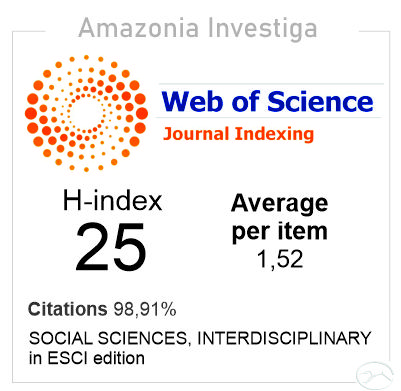



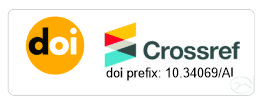



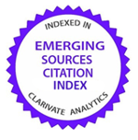
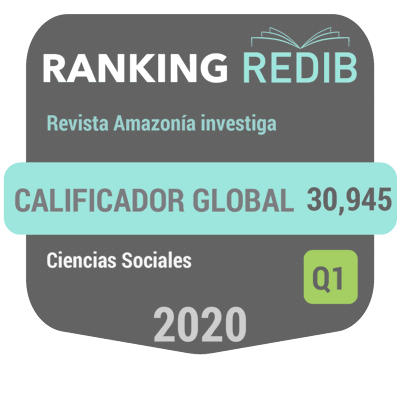
















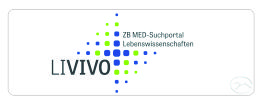






















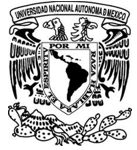










.gif)






